Preparation of Formaldehyde-Free Bio-Based Plywood Adhesive Using Polyvinyl Alcohol and DES-Extracted Lignin Composite
DOI: 10.23977/erej.2025.090206 | Downloads: 0 | Views: 85
Author(s)
Ruiqi Zhang 1
Affiliation(s)
1 Shenzhen College of International Education, No. 3 Antuoshan 6th Rd., Futian District, Shenzhen, China
Corresponding Author
Ruiqi ZhangABSTRACT
The purpose of this paper is to develop a preparation method for a formaldehyde-free, low CO2 emission, and sustainable plywood adhesive. Previous research approached VOC emissions in formaldehyde-based adhesives via additives or VOC absorbents but failed to completely eradicate VOC emission. Lignin, as an abundant biomass feedstock, is a strong candidate for formaldehyde-free sustainable adhesive research. In this paper, three choline chloride-based (ChCl) Deep Eutectic Solvents (DES) were prepared for lignin extraction. ChCl and lactic acid showed the highest lignin solubility at 41.3% weight percentage and was used to extract lignin. The extracted lignin quality was verified using nuclear magnetic resonance. Lignin-polyvinyl alcohol adhesive was then prepared and hot-pressed to produce plywood, which were then subjected to mechanical and rheological testing. The end result was a plywood product that met GB/T 17657-2013 Chinese national standards with adhesive strength of 0.7 MPa. We hope this paper can act as reference for future works concerning formaldehyde-free adhesives.
KEYWORDS
Biomass, Bio-Adhesive, Formaldehyde-Free, Deep Eutectic Solvent, PlywoodCITE THIS PAPER
Ruiqi Zhang, Preparation of Formaldehyde-Free Bio-Based Plywood Adhesive Using Polyvinyl Alcohol and DES-Extracted Lignin Composite. Environment, Resource and Ecology Journal (2025) Vol. 9: 47-59. DOI: http://dx.doi.org/10.23977/erej.2025.090206.
REFERENCES
[1] Wiglusz R, Jarnuszkiewicz I, Sitko E, Wolska L. Hygienic aspects of the use of pressed-wood products in residential buildings. Part II. The effect of environmental conditions (temperature and relative humidity) on formaldehyde emission from particleboards. Bull Inst Marit Trop Med Gdynia. 1990;41(1-4):79-87. PMID: 2135931.
[2] International Agency for Research on Cancer, 2007. Press release no. 153. 15 June 2004. URL http://www. iarc. fr/en/Media-Centre/IARC-Press-Releases/Archives-2006-2004/2004/IARC-classifies-formaldehyde-as-carcinogenic-to-humans Accessed, 6.
[3] Dos Santos, M.F.N., Rosane Ap G, B., Bezerra, B.S. and Varum, H.S., 2014. Comparative study of the life cycle assessment of particleboards made of residues from sugarcane bagasse (Saccharum spp.) and pine wood shavings (Pinus elliottii). Journal of Cleaner Production, 64, pp.345-355.
[4] Thetkathuek A., Yingratanasuk T., Ekburanawat W. Respiratory symptoms due to occupational exposure to formaldehyde and MDF dust in a MDF furniture factory in Eastern Thailand. Adv. Prev. Med. 2016:11. doi: 10.1155/2016/3705824.
[5] Mathur N., Rastogi S.K. Respiratory effects due to occupational exposure to formaldehyde: Systematic review with meta-analysis. Indian J. Occup. Env. Med. 2007;11:26–31. doi: 10.4103/0019-5278.32461
[6] Yu, X., Qi, H., Huang, Z., Zhang, B. and Liu, S., 2017. Preparation and characterization of spherical β-cyclodextrin/ urea–formaldehyde microcapsules modified by nano-titanium oxide. RSC advances, 7(13), pp.7857-7863.
[7] Zhang, H., She, Y., Song, S., Lang, Q. and Pu, J., 2013. Particulate reinforcement and formaldehyde adsorption of modified nanocrystalline cellulose in urea-formaldehyde resin adhesive. Journal of adhesion science and technology, 27(9), pp.1023-1031.
[8] Dukarska, D. and Bartkowiak, M., 2016. The effect of organofunctional nanosilica on the cross-linking process and thermal resistance of UF resin. Journal of Polymer Research, 23(8), p.166.
[9] de Cademartori, P.H.G., Artner, M.A., de Freitas, R.A. and Magalhães, W.L.E., 2019. Alumina nanoparticles as formaldehyde scavenger for urea-formaldehyde resin: Rheological and in-situ cure performance. Composites Part B: Engineering, 176, p.107281.
[10] Ferguson, R.C., Mendon, S.K., Rawlins, J.W. and Thames, S.F., 2014. Formaldehyde-free wood composites from soybean protein adhesive. Journal of Renewable Materials, 2(3), pp.166-172.
[11] Jiang, Y., Chen, Q., Tan, H., Gu, J. and Zhang, Y., 2019. A low-cost, formaldehyde-free, and high-performance starch-based wood adhesive. BioResources, 14(1), pp.1405-1418.
[12] Zhu, Y., Zhang, F., Bian, R., Zeng, G., Li, J., Lyu, Y. and Li, J., 2024. Formaldehyde-free biomass adhesive based on industrial alkali lignin with high strength and toughness. Industrial Crops and Products, 222, p.119525.
[13] Islam, M.N., Liza, A.A., Khatun, M.L., Faruk, M.O., Das, A.K., Dey, M. and Akanda, M.J.H., 2021. Formulation and characterization of formaldehyde‐free chemically modified bone‐based adhesive for lignocellulosic composite products. Global Challenges, 5(9), p.2100002.
[14] Lebo Jr, S.E., Gargulak, J.D. and McNally, T.J., 2002. Encyclopedia of polymer science and technology, 3.
[15] Yang, W., Jiao, L., Wang, X., Wu, W., Lian, H. and Dai, H., 2021. Formaldehyde-free self-polymerization of lignin-derived monomers for synthesis of renewable phenolic resin. International Journal of Biological Macromolecules, 166, pp.1312-1319.
[16] Li, R.J., Gutierrez, J., Chung, Y.L., Frank, C.W., Billington, S.L. and Sattely, E.S., 2018. A lignin-epoxy resin derived from biomass as an alternative to formaldehyde-based wood adhesives. Green chemistry, 20(7), pp.1459-1466.
[17] Siahkamari, M., Emmanuel, S., Hodge, D.B. and Nejad, M., 2022. Lignin-glyoxal: a fully biobased formaldehyde-free wood adhesive for interior engineered wood products. ACS Sustainable Chemistry & Engineering, 10(11), pp.3430-3441.
[18] Hu, S., Chen, X., Ni, S., Wang, Z., Fu, Y., Qin, M. and Zhang, Y., 2025. Formaldehyde-Free, High-Bonding Performance, Fully Lignin-Based Adhesive Cross-Linked by Glutaraldehyde. ACS Applied Polymer Materials, 7(2), pp.859-867.
[19] Kadla, J.F. and Kubo, S., 2004. Lignin-based polymer blends: analysis of intermolecular interactions in lignin–synthetic polymer blends. Composites Part A: Applied Science and Manufacturing, 35(3), pp.395-400.
[20] Schellekens, R. and Bastiaansen, C.W.M.J., 1991. The drawing behavior of polyvinylalcohol fibers. Journal of applied polymer science, 43(12), pp.2311-2315.
[21] Vineeth, S.K. and Gadhave, R.V., 2024. Corn starch blended polyvinyl alcohol adhesive chemically modified by crosslinking and its applicability as polyvinyl acetate wood adhesive. Polymer Bulletin, 81(1), pp.811-825.
[22] Arndt, K.F., Richter, A., Ludwig, S., Zimmermann, J., Kressler, J., Kuckling, D. and Adler, H.J., 1999. Poly (vinyl alcohol)/poly (acrylic acid) hydrogels: FT‐IR spectroscopic characterization of crosslinking reaction and work at transition point. Acta Polymerica, 50(11‐12), pp.383-390.
[23] Gallo, S., Artuso, E., Brambilla, M.G., Gambarini, G., Lenardi, C., Monti, A.F., Torresin, A., Pignoli, E. and Veronese, I., 2019. Characterization of radiochromic poly (vinyl-alcohol)–glutaraldehyde Fricke gels for dosimetry in external x-ray radiation therapy. Journal of Physics D: Applied Physics, 52(22), p.225601.
[24] Zhang, Y., Zhu, P.C. and Edgren, D., 2010. Crosslinking reaction of poly (vinyl alcohol) with glyoxal. Journal of Polymer Research, 17(5), pp.725-730.
[25] Sainik, S.K., Panda, P.K. and Sreekumar, T.V., 2025. Fast and energy efficient crosslinking of PVA to make water resistant coating using glutaraldehyde. International Journal of Polymer Analysis and Characterization, pp.1-17.
[26] Choi, H.M., Kim, J.H. and Shin, S., 1999. Characterization of cotton fabrics treated with glyoxal and glutaraldehyde. Journal of Applied Polymer Science, 73(13), pp.2691-2699.
[27] Alonso, D.A., Baeza, A., Chinchilla, R., Guillena, G., Pastor, I.M. and Ramón, D.J., 2016. Deep eutectic solvents: the organic reaction medium of the century. European Journal of Organic Chemistry, 2016(4), pp.612-632.
[28] Alvarez-Vasco, C., Ma, R., Quintero, M., Guo, M., Geleynse, S., Ramasamy, K.K., Wolcott, M. and Zhang, X., 2016. Unique low-molecular-weight lignin with high purity extracted from wood by deep eutectic solvents (DES): a source of lignin for valorization. Green chemistry, 18(19), pp.5133-5141.
[29] Shen, X.J., Wen, J.L., Mei, Q.Q., Chen, X., Sun, D., Yuan, T.Q. and Sun, R.C., 2019. Facile fractionation of lignocelluloses by biomass-derived deep eutectic solvent (DES) pretreatment for cellulose enzymatic hydrolysis and lignin valorization. Green chemistry, 21(2), pp.275-283.
[30] Chen, Z. and Wan, C., 2018. Ultrafast fractionation of lignocellulosic biomass by microwave-assisted deep eutectic solvent pretreatment. Bioresource technology, 250, pp.532-537.
[31] Koutsoukos, S., Tsiaka, T., Tzani, A., Zoumpoulakis, P. and Detsi, A., 2019. Choline chloride and tartaric acid, a Natural Deep Eutectic Solvent for the efficient extraction of phenolic and carotenoid compounds. Journal of Cleaner Production, 241, p.118384.
[32] Choi, Y.H. and Verpoorte, R., 2019. Green solvents for the extraction of bioactive compounds from natural products using ionic liquids and deep eutectic solvents. Current Opinion in Food Science, 26, pp.87-93.
[33] Hong, S., Shen, X.J., Pang, B., Xue, Z., Cao, X.F., Wen, J.L., Sun, Z.H., Lam, S.S., Yuan, T.Q. and Sun, R.C., 2020. In-depth interpretation of the structural changes of lignin and formation of diketones during acidic deep eutectic solvent pretreatment. Green chemistry, 22(6), pp.1851-1858.
[34] Al-Dawsari, J.N., Bessadok-Jemai, A., Wazeer, I., Mokraoui, S., AlMansour, M.A. and Hadj-Kali, M.K., 2020. Fitting of experimental viscosity to temperature data for deep eutectic solvents. Journal of molecular liquids, 310, p.113127.
[35] Hladnik, L., Vicente, F.A., Novak, U., Grilc, M. and Likozar, B., 2021. Solubility assessment of lignin monomeric compounds and organosolv lignin in deep eutectic solvents using in situ Fourier-transform infrared spectroscopy. Industrial Crops and Products, 164, p.113359.
[36] Chen, H., Wang, A., Yan, C., Liu, S., Li, L., Wu, Q., Liu, Y., Liu, Y., Nie, G., Nie, S. and Yao, S., 2023. Study on the solubility of industrial lignin in choline chloride-based deep eutectic solvents. Sustainability, 15(9), p.7118.
[37] Hong, S., Shen, X.J., Xue, Z., Sun, Z. and Yuan, T.Q., 2020. Structure–function relationships of deep eutectic solvents for lignin extraction and chemical transformation. Green Chemistry, 22(21), pp.7219-7232.
[38] Pan, X., Liu, Y., Ma, Z., Qin, Y., Lu, X., Feng, X., Shao, Q. and Zhu, Y., 2024. Molecular insight into the mechanism of lignin dissolution in acid choline chloride–based deep eutectic solvents. Journal of Molecular Liquids, 406, p.125123.
[39] Zhang, H., Lang, J., Lan, P., Yang, H., Lu, J. and Wang, Z., 2020. Study on the dissolution mechanism of cellulose by ChCl-based deep eutectic solvents. Materials, 13(2), p.278.
[40] Soares, B., Tavares, D.J., Amaral, J.L., Silvestre, A.J., Freire, C.S. and Coutinho, J.A., 2017. Enhanced solubility of lignin monomeric model compounds and technical lignins in aqueous solutions of deep eutectic solvents. ACS Sustainable Chemistry & Engineering, 5(5), pp.4056-4065.
[41] Sumer, Z. and Van Lehn, R.C., 2022. Data-centric development of lignin structure–solubility relationships in deep eutectic solvents using molecular simulations. ACS Sustainable Chemistry & Engineering, 10(31), pp.10144-10156.
[42] Xie, Y., Dong, H., Zhang, S., Lu, X. and Ji, X., 2014. Effect of water on the density, viscosity, and CO2 solubility in choline chloride/urea. Journal of Chemical & Engineering Data, 59(11), pp.3344-3352.
[43] Liu, S., Wu, S., Pang, C., Li, W. and Dong, R., 2014. Microbial pretreatment of corn stovers by solid-state cultivation of Phanerochaete chrysosporium for biogas production. Applied biochemistry and biotechnology, 172(3), pp.1365-1376.
[44] Wang, H.W., Ying, W., Ma, B.L. and Xue, Q.L., 2013. The research progress of comprehensive utilization of crop straw. Advanced Materials Research, 807, pp.1211-1218.
[45] Lubis, M.A.R., Labib, A., Sudarmanto, Akbar, F., Nuryawan, A., Antov, P., Kristak, L., Papadopoulos, A.N. and Pizzi, A., 2022. Influence of lignin content and pressing time on plywood properties bonded with cold-setting adhesive based on poly (vinyl alcohol), lignin, and hexamine. Polymers, 14(10), p.2111.
[46] Kubo, S. and Kadla, J.F., 2003. The formation of strong intermolecular interactions in immiscible blends of poly (vinyl alcohol)(PVA) and lignin. Biomacromolecules, 4(3), pp.561-567.
| Downloads: | 5841 |
|---|---|
| Visits: | 423786 |
Sponsors, Associates, and Links
-
International Journal of Geological Resources and Geological Engineering
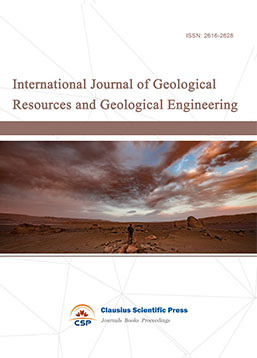
-
Big Geospatial Data and Data Science
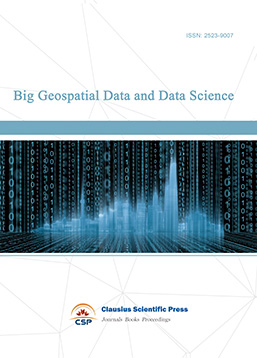
-
Solid Earth and Space Physics

-
Environment and Climate Protection
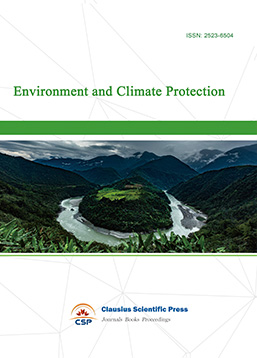
-
Journal of Cartography and Geographic Information Systems

-
Offshore and Polar Engineering

-
Physical and Human Geography
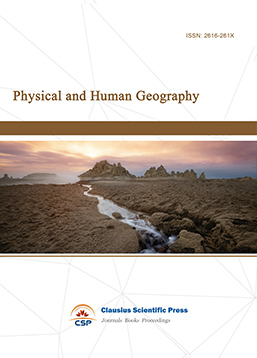
-
Journal of Atmospheric Physics and Atmospheric Environment

-
Trends in Meteorology

-
Journal of Coastal Engineering Research

-
Focus on Plant Protection
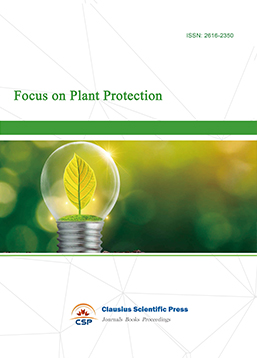
-
Toxicology and Health of Environment
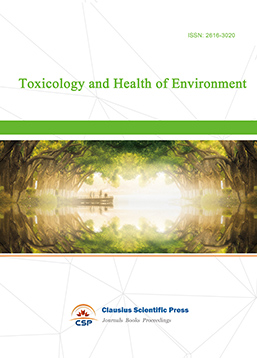
-
Geoscience and Remote Sensing

-
Advances in Physical Oceanography
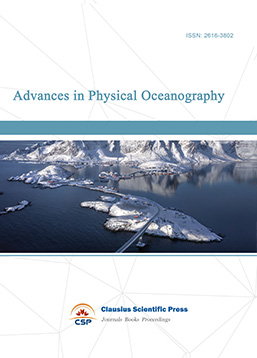
-
Biology, Chemistry, and Geology in Marine
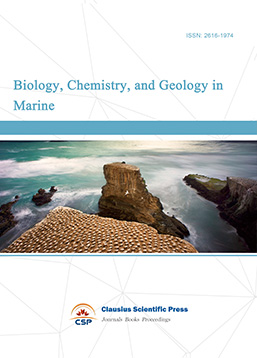
-
Water-Soil, Biological Environment and Energy
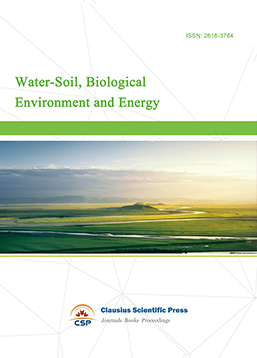
-
Geodesy and Geophysics
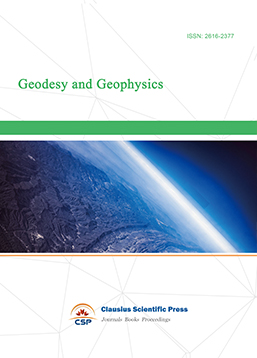
-
Journal of Structural and Quaternary Geology
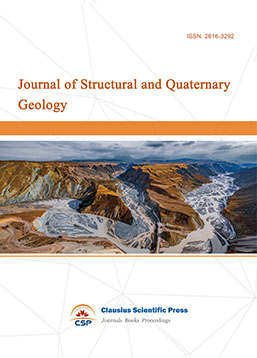
-
Journal of Sedimentary Geology

-
International Journal of Polar Social Research and Review


 Download as PDF
Download as PDF